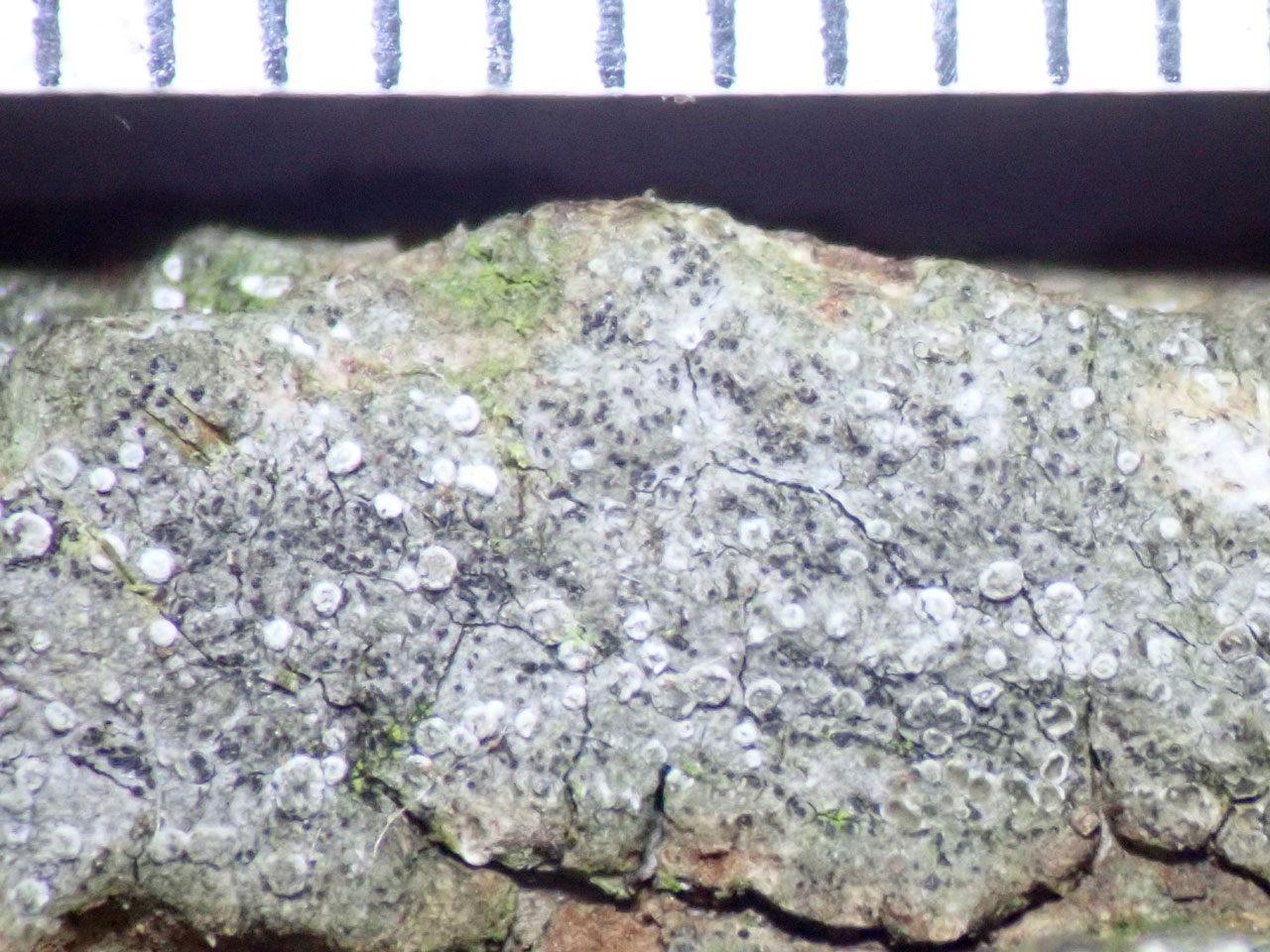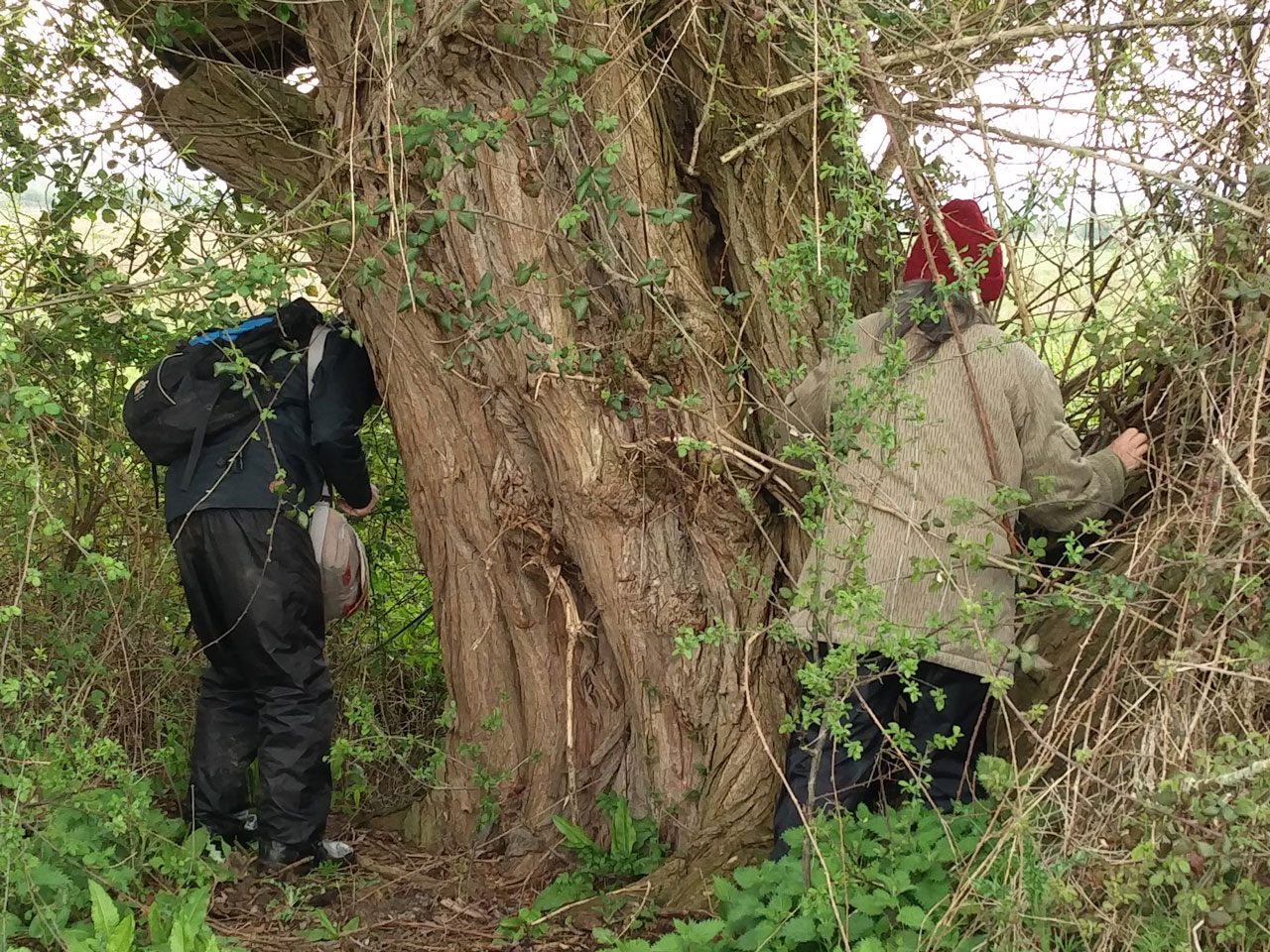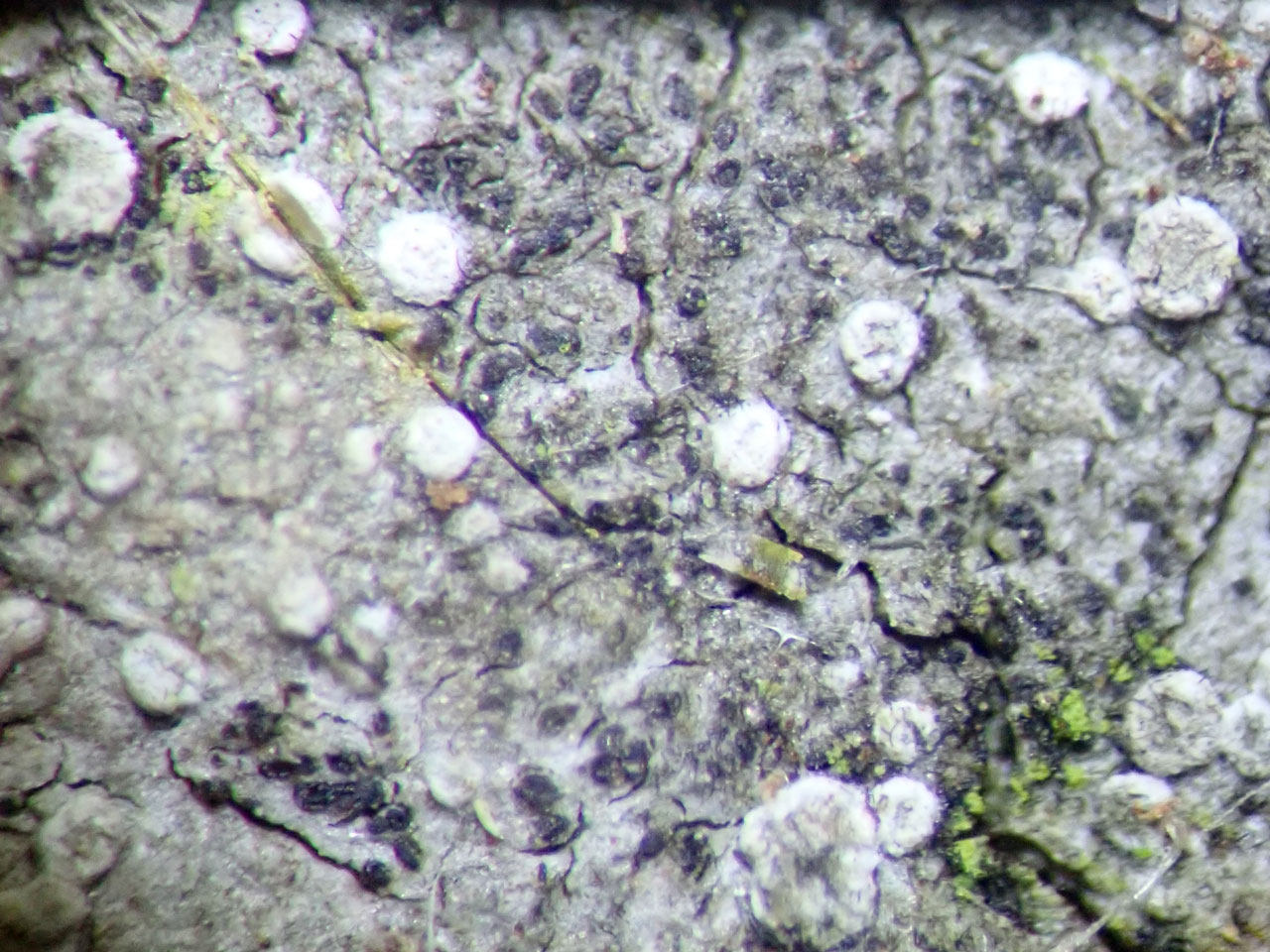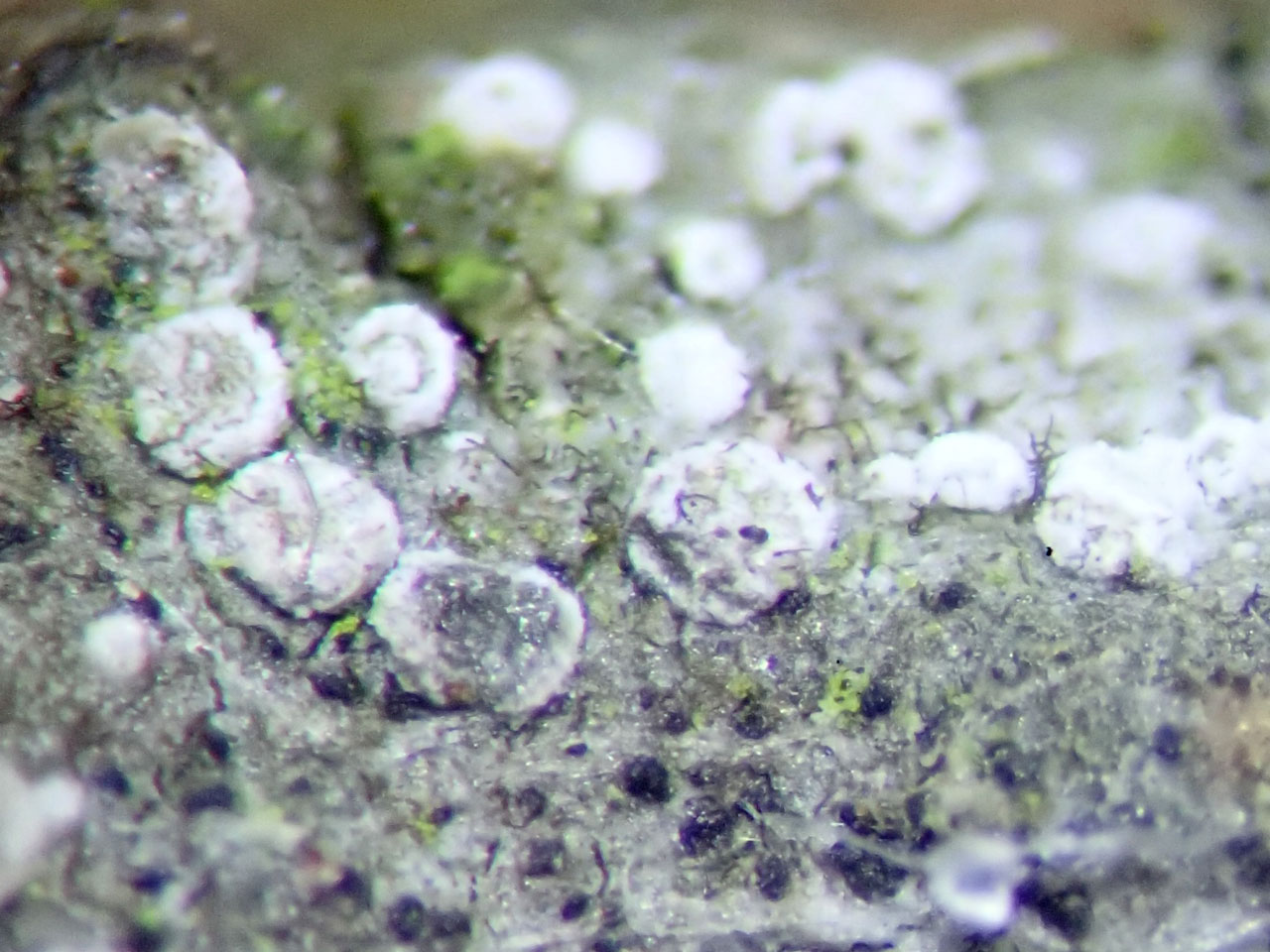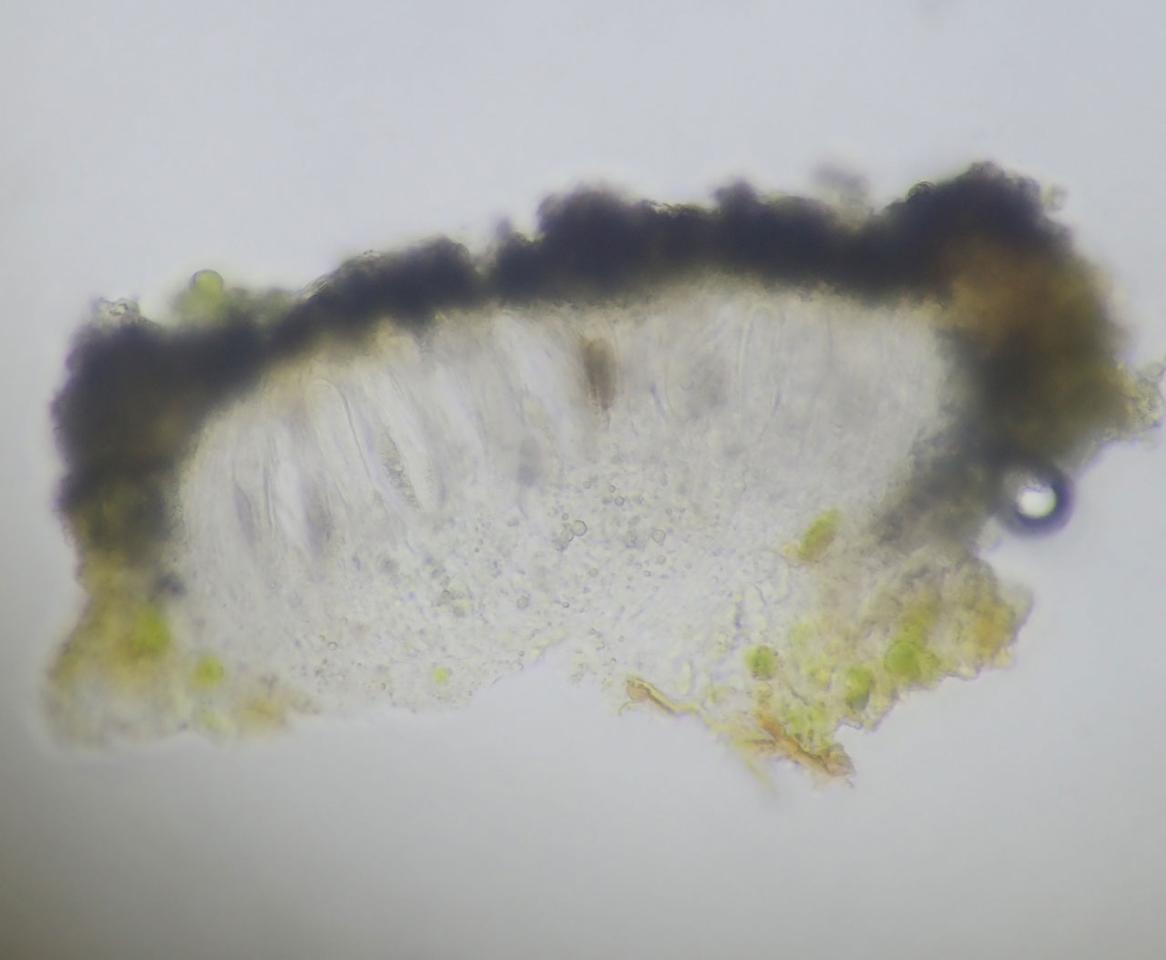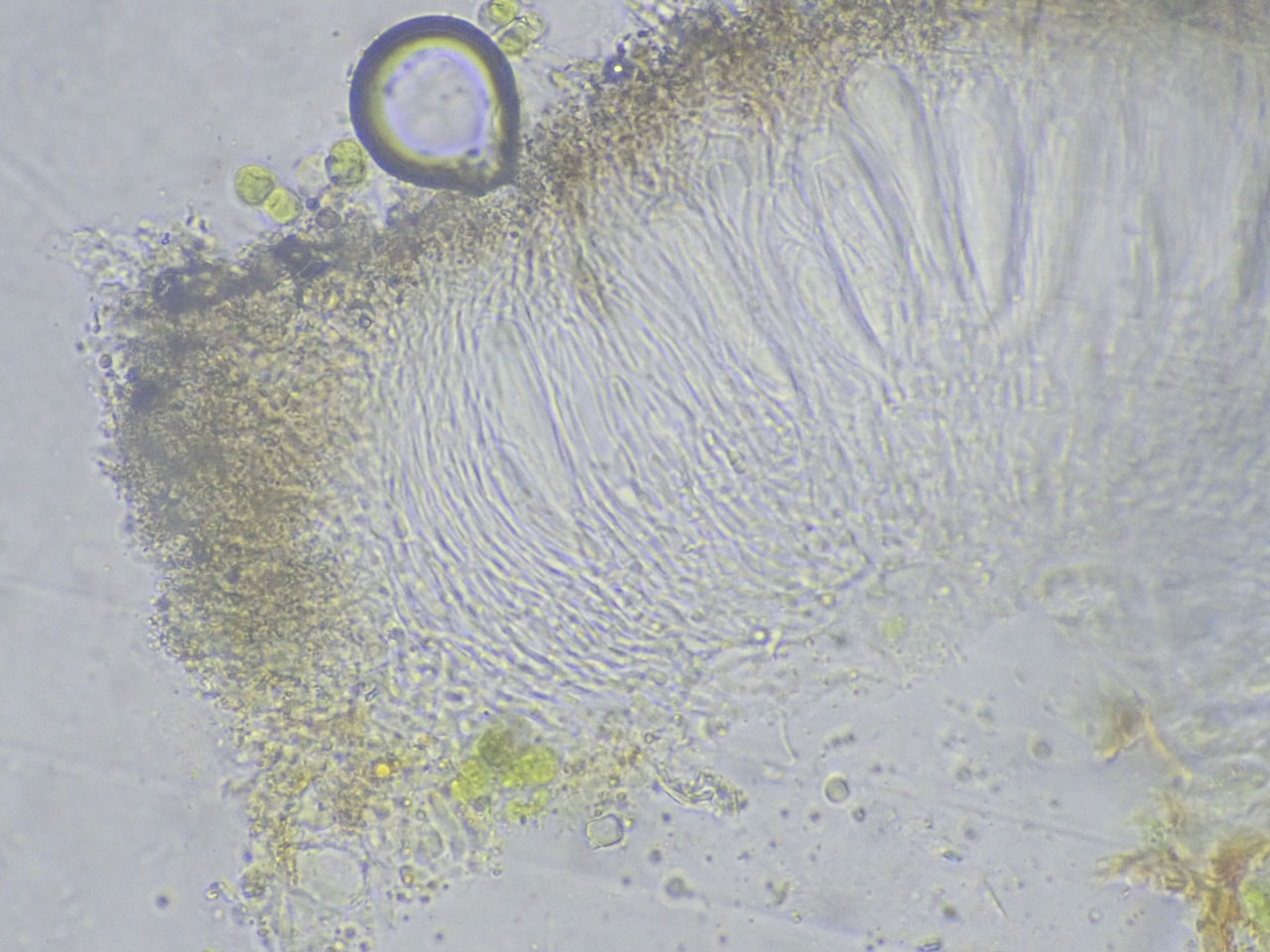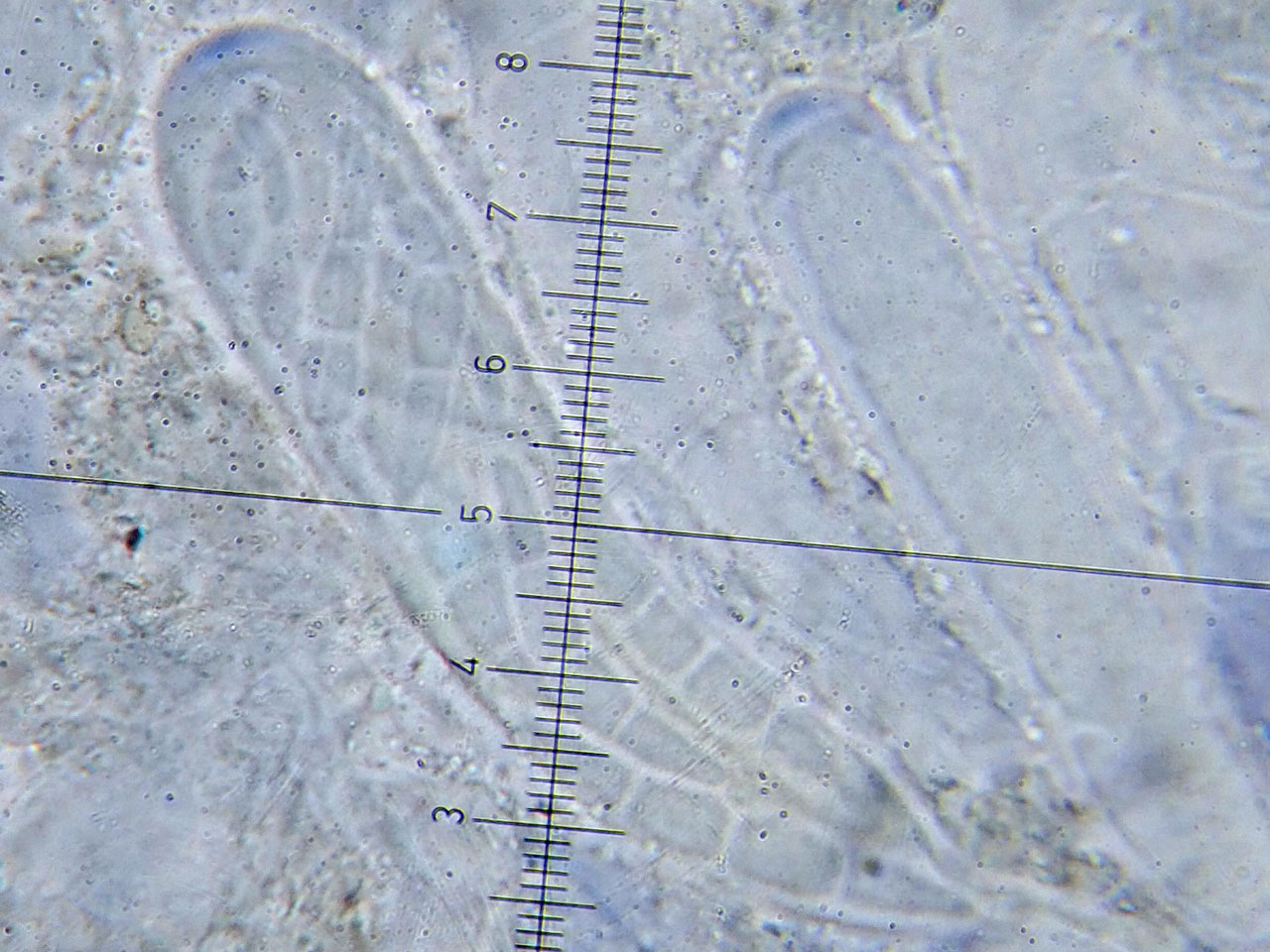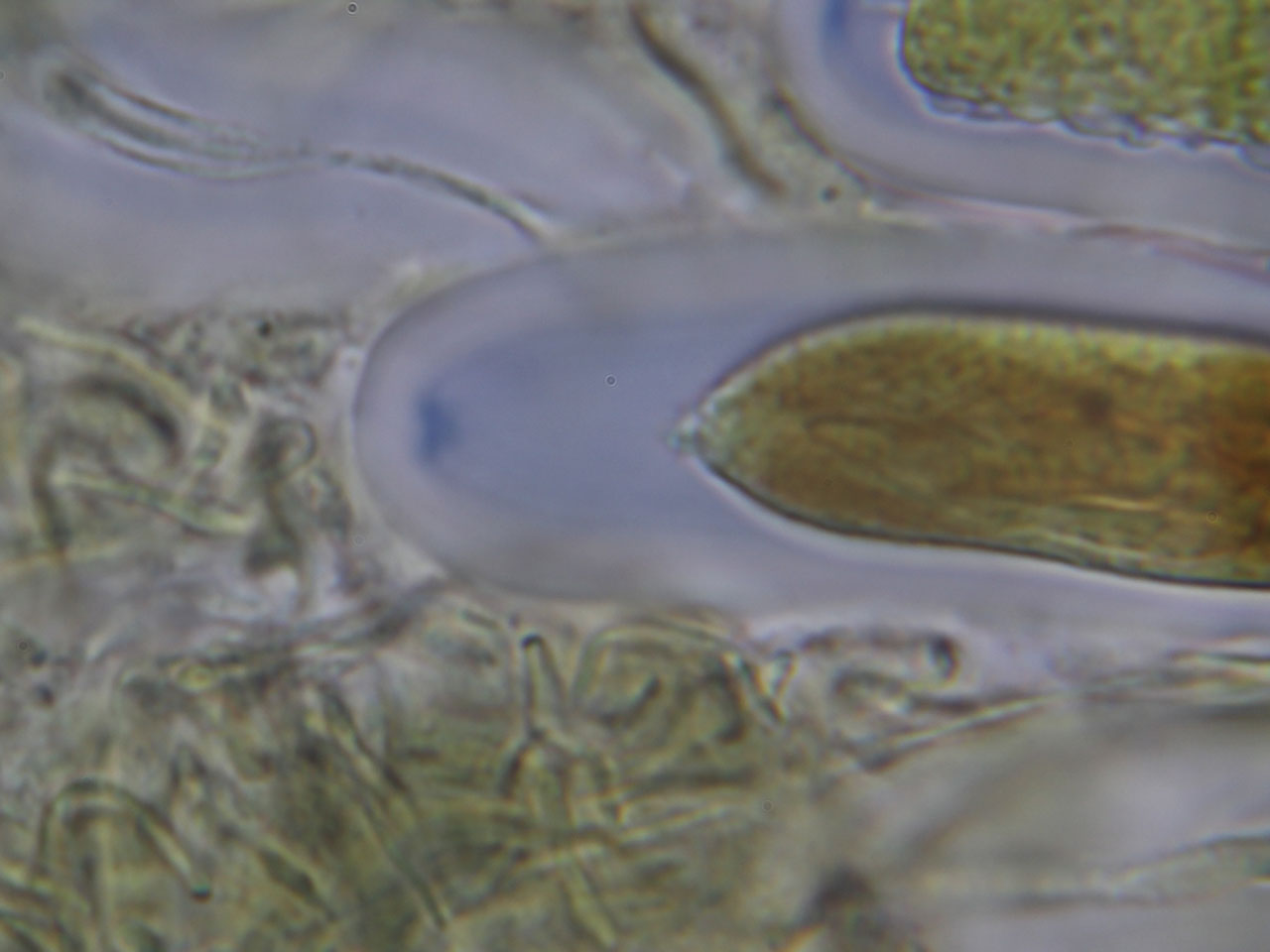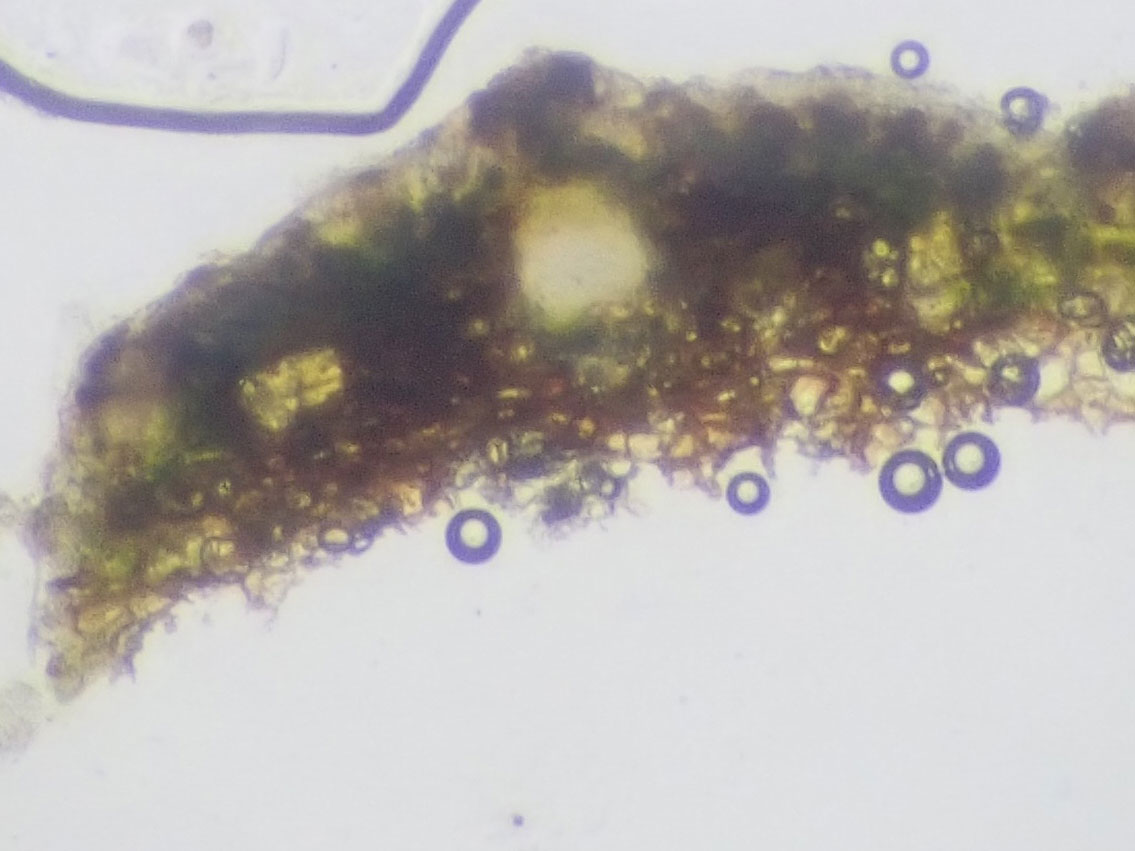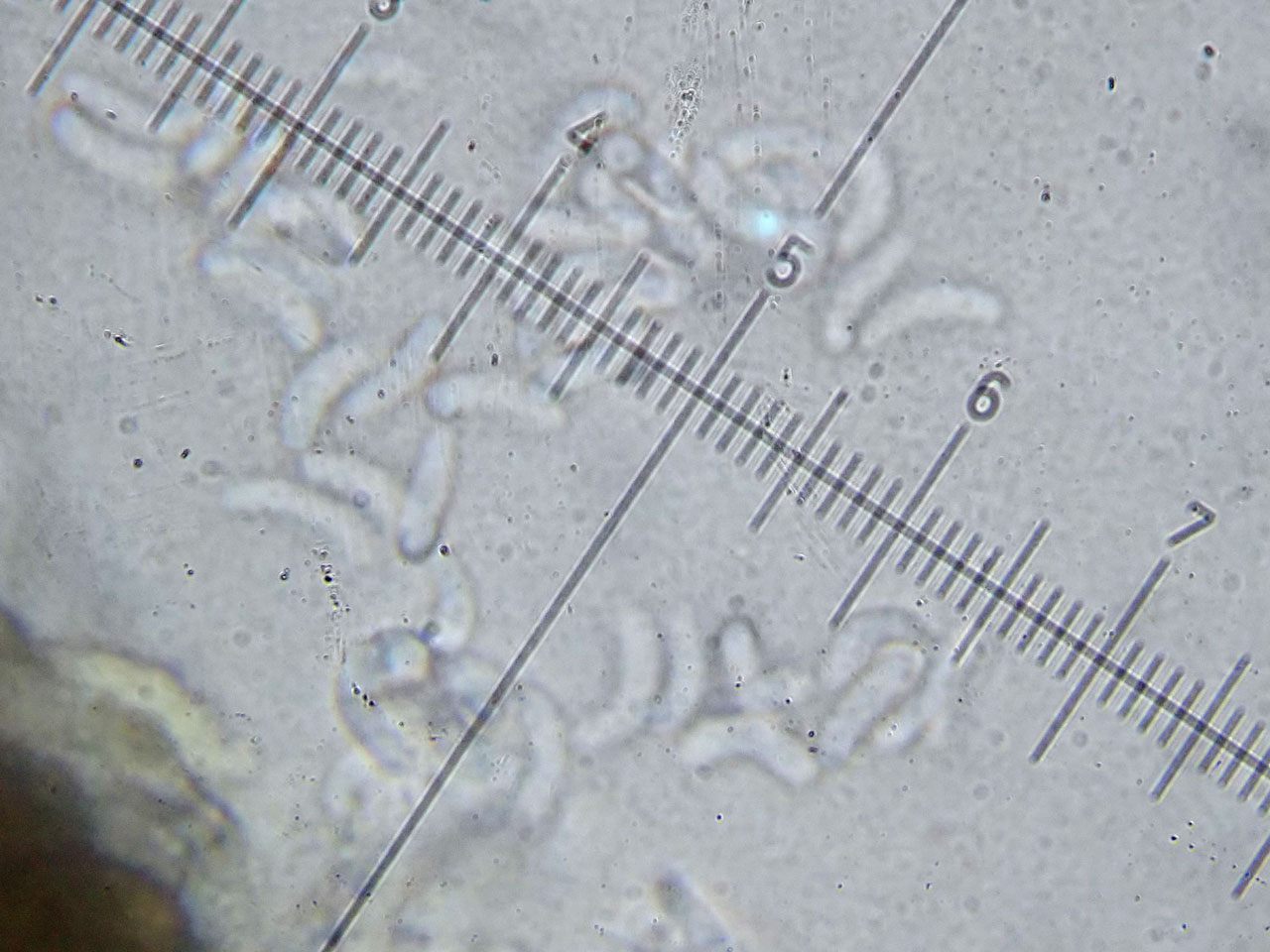Ocellomma picconianum
Ocellomma picconianum is an internationally scarce link Mediterranean – Southern Atlantic lichen of dry bark on trees, which is typically found on Holm Oak in humid Mediterranean woodlands (Nimis, 2023). The nearest record before 2023 was in an old riverine woodland in the Landes, Gironde on the Atlantic Coast of France (Roux, et coll., 2020). Remarkably in 2023, David Hill, Juliet Bailey and Jo Corke, found this lichen on shaded dry bark on an old Willow in a hedge on the Severn plain, within the Elmore Court rewilding, in Gloucestershire. Superficially it resembled Lecanactis abietina, but the C+ red pruina of the pycnidia of that species were missing and the spores were too small but it did appear to be a Arthoniales species. The combination white pruinose apothecia and the black pycnidia, however were distinctive and suggested something new. The surprising answer was provided by Damien Ertz.
Thallus crustose, whitish, ecorticate. Apothecia circular in outline, 0.2-0.5 mm across, with a black but usually white-pruinose disc, and often with a conspicuous, ecorticate, white thalline margin containing large crystals, contrasting with the darker colour of the disc. Proper exciple rudimentary or very thin; epithecium brown; hymenium colourless; paraphysoids branched, not or only slightly swollen at apex; hypothecium colourless to pale brown, I+ blue, K/I+ violet. Asci 8-spored, clavate, fissitunicate, with a I+ blue ring in tholus. Ascospores 3-septate, hyaline, slightly curved, 19-30 x 4-5 μm, without a perispore. Pycnidia black. Conidia bacilliform, curved, 4-6 x 1-1.2 μm. Photobiont trentepohlioid. Chemistry: K–, C–, KC–, K/UV+ bright blue, Pd–, UV–. Chemistry: thallus with roccellic acid. (Description adapted from Nimis (2023)).
Most likely to be over looked as Lecanactis abietina, but Ocellomma picconianum has smaller apothecia with whiter pruina, lacks C+ red pruina on the pycnidia and has smaller spores. Lecanactis abietina also typically grows in less enriched woodland habitats.
In Gloucestershire found on dry bark on a shaded old Willow in a hedge on the Severn plain. Elsewhere described as typically found on Holm Oak in humid Mediterranean woodlands in Italy (Nimis, 2023) and in France on dry bark on Downy Oak, Cork Oak, Maple, Olive, Poplar, Pine and Cyperus (Roux, et coll., 2020).

So far known from a single location in Gloucestershire
The status and threats in England are unknown at present; it is not even clear if this is an overlooked long term relic species or a recent colonisation. Even in its core Mediterranean habitats in France, however it is regarded as Endangered, so the English record is likely to be of significance. Lichenologists should look out for this species in the south west in other locations.
Nimis P. L. (2023) ITALIC - The Information System on Italian Lichens. Version 7.0. University of Trieste, Dept. of Biology. Link, accessed on 2023-06-13
Roux, C., et coll. (2020) Catalogue des lichens et champignons lichénicoles de France métropolitaine, 3e édition revue et augmentée. Association française de lichénologie: Fontainebleau.
Text by Neil A Sanderson, pictures from Juliet Bailey & Jo Corke
